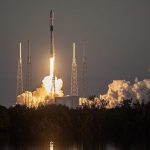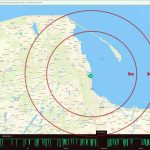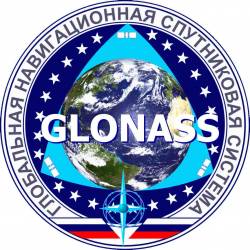Successful launch of the second modernized Block IIR satellite, IIR-15(M2), on September 25 and scheduling of another IIR-M launch on November 14 underlines recent progress in the GPS program.
IIR-15(M2), also identified by its space vehicle number (SVN58) and pseudorandom code number (PRN31), will be placed into orbital plane A, slot 2. The U.S. Air Force has designated the satellite to be launched in November as GPS IIR-16/M3, PRN15/SVN55.
Successful launch of the second modernized Block IIR satellite, IIR-15(M2), on September 25 and scheduling of another IIR-M launch on November 14 underlines recent progress in the GPS program.
IIR-15(M2), also identified by its space vehicle number (SVN58) and pseudorandom code number (PRN31), will be placed into orbital plane A, slot 2. The U.S. Air Force has designated the satellite to be launched in November as GPS IIR-16/M3, PRN15/SVN55.
That brings the number of GPS satellites in orbit to 30, and the system may reach a new maximum over the next year. Expansion of the constellation has prompted the Air Force to reserve an additional 60 code designations in Section 6 of the Interface Control Document (GPS-ICD-200), which GPS receiver manufacturers will probably need to incorporate into future products.
The launches represent the most tangible results of a program that is seeing a considerable acceleration in institutional initiatives since the establishment of the National Space-Based Positioning, Navigation, and Timing (PNT) Executive Committee established under a 2004 presidential directive. With another meeting set for October 27, that group will have met four times in its first year of operation, compared with only seven meetings in seven years by its predecessor, the Interagency GPS Executive Committee (IGEB).
A five-year PNT plan has been drafted and members of a Federal PNT Advisory Board (including foreign representatives), nominated, with their first meeting scheduled later this year, according to Mike Shaw, director of the PNT Coordination Office. The executive committee, cochaired by Deputy Secretary of defense Gordon England and Deputy Secretary of Transportation Maria Cino, still must accomplish something that eluded the IGEB: gain funding from federal agencies to support future civil improvements to GPS, including the L1C signal proposed for the GPS III generation of satellites planned for launch beginning in 2014.
Meanwhile, at the request of the PNT Executive Committee, the National Security Space Office (NSSO) has begun gathering information from public agencies and manufacturers to develop “an evolutionary path” for the National PNT Architecture, looking ahead to the 2025 time period. Organizations interested in providing comment on the architecture request for information, which will develop a long-term PNT investment strategy and framework, may contact ns******@*sd.mil.
Copyright 2006 Gibbons Media and Research LLC





